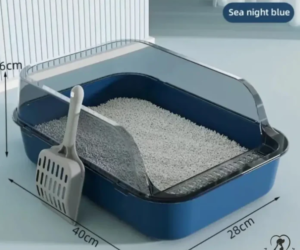
High-Density Polyethylene (HDPE) sheets have gained prominence in various industries, particularly in water management systems. Their exceptional properties make them ideal for applications ranging from wastewater treatment to stormwater management. This article explores the significant role of HDPE sheets in water management systems, highlighting their benefits, applications, and the manufacturing processes involved.
Understanding HDPE Sheets
HDPE is a type of polyethylene that is known for its high strength-to-density ratio. It is produced through the polymerization of ethylene, a byproduct of petroleum. HDPE sheets are lightweight, durable, and resistant to moisture, chemicals, and UV rays, making them an ideal choice for various applications, especially in water management systems.
Key Properties of HDPE Sheets
- Durability: HDPE sheets are highly resistant to wear and tear, which is essential for applications exposed to harsh environmental conditions.
- Chemical Resistance: They can withstand a variety of chemicals, making them suitable for wastewater treatment and chemical storage.
- Waterproof: The non-porous nature of HDPE prevents water penetration, ensuring efficient water management.
- UV Resistance: Many HDPE sheets come with UV stabilizers that protect them from sun damage, making them suitable for outdoor applications.
Applications of HDPE Sheets in Water Management
1. Liners for Ponds and Reservoirs
One of the primary applications of HDPE sheets in water management is as liners for ponds, reservoirs, and lakes. These liners prevent water loss due to seepage, helping to maintain water levels. The impermeable nature of HDPE sheets ensures that the water remains contained, reducing the risk of contamination from surrounding soil.
2. Wastewater Treatment
In wastewater treatment plants, HDPE sheets are used in various capacities:
- Liners: They are employed as liners in treatment lagoons and containment areas to prevent the escape of contaminated water.
- Baffle Walls: HDPE sheets can be formed into baffle walls that direct the flow of wastewater, improving the efficiency of the treatment process.
- Chemical Storage: Due to their chemical resistance, HDPE sheets are used to create tanks and containers for storing hazardous materials safely.
3. Stormwater Management
Effective stormwater management is crucial for preventing flooding and water pollution. HDPE sheets play a vital role in:
- Retention Basins: They can be used as liners in retention basins to hold stormwater temporarily, allowing it to be slowly released into the environment.
- Swales and Biofiltration Systems: HDPE sheets help to create swales and biofiltration systems that filter pollutants from stormwater before it enters natural water bodies.
4. Aquaculture
In aquaculture, HDPE sheets are used for constructing fish ponds and tanks. The durability and waterproof nature of HDPE sheets make them ideal for containing water and creating suitable habitats for aquatic life.
5. Irrigation Systems
High Density Polyethylene Plastic can also be utilized in irrigation systems to create barriers that prevent water from seeping away. This ensures that crops receive adequate moisture, which is essential for agricultural productivity.
The Manufacturing Process of HDPE Sheets
The Polyethylene Roll Manufacture process of HDPE sheets involves several steps that ensure the production of high-quality products suitable for various applications:
1. Material Selection
The first step involves selecting high-quality polyethylene resin, which is crucial for the performance characteristics of the final product.
2. Extrusion
The selected resin is melted and extruded through a die to form a continuous sheet. This process allows for precise control over the thickness and dimensions of the sheets.
3. Cooling and Cutting
After extrusion, the sheets are cooled, either through air cooling or water baths. Once cooled, they are cut into specified dimensions for various applications.
4. Quality Control
Quality control is a critical step in the manufacturing process. Each batch of HDPE sheets is tested for tensile strength, impact resistance, and chemical resistance to ensure they meet industry standards.
5. Packaging and Distribution
Once quality checks are complete, the HDPE sheets are packaged for distribution to various markets. Companies like Mahira Polyglobal LLP focus on delivering high-quality Polyethylene Sheets Suppliers ensuring that their products meet the needs of water management systems.
Benefits of Using HDPE Sheets in Water Management
1. Cost-Effectiveness
HDPE sheets are generally more affordable than other materials used in water management, such as concrete or metal. Their longevity and low maintenance requirements contribute to overall cost savings.
2. Environmental Sustainability
By using HDPE sheets, companies can reduce their environmental footprint. The recyclable nature of HDPE allows for a closed-loop system where materials can be reused, minimizing waste.
3. Efficiency in Water Management
The impermeable properties of HDPE sheets enhance the efficiency of water management systems by preventing water loss and contamination. This is especially crucial in applications involving wastewater and stormwater.
4. Versatility
The versatility of HDPE sheets allows for a wide range of applications, making them suitable for various water management systems. Their adaptability ensures that they can meet specific needs across different industries.
Conclusion
The role of HDPE sheets in water management systems cannot be overstated. Their durability, chemical resistance, and waterproof nature make them indispensable for applications ranging from wastewater treatment to stormwater management. By opting for HDPE sheets, industries can achieve more efficient water management while contributing to environmental sustainability.
Companies like Mahira Polyglobal LLP play a crucial role in providing high-quality polyethylene sheets tailored for water management applications. As the world continues to grapple with water scarcity and pollution, the importance of effective water management solutions, including the use of HDPE sheets, will only grow. Embracing these materials is a step toward sustainable water management practices that benefit both the environment and society.
Frequently Asked Questions (FAQs)
1. What are HDPE sheets?
High-Density Polyethylene (HDPE) sheets are flat panels made from high-density polyethylene, known for their strength, durability, and resistance to chemicals and moisture.
2. How are HDPE sheets used in water management?
HDPE sheets are used in water management for applications such as pond liners, wastewater treatment, stormwater management, aquaculture, and irrigation systems.
3. What is the benefit of using HDPE sheets for pond liners?
HDPE sheets prevent water loss due to seepage and contamination from surrounding soil, making them ideal for use as pond liners.
4. Where can I purchase high-density polyethylene plastic sheets?
You can find high-density polyethylene plastic sheets from various suppliers, including Mahira Polyglobal LLP, which offers a range of quality products for water management and other applications.
5. Are HDPE sheets environmentally friendly?
Yes, HDPE sheets are environmentally friendly due to their durability, recyclability, and ability to reduce water loss and contamination in water management systems.




